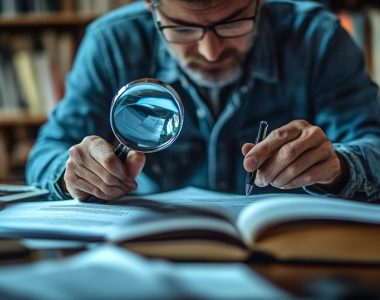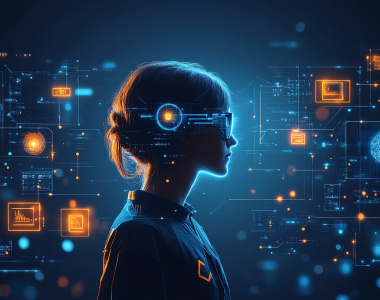
Los avances recientes en inteligencia artificial se difunden rápidamente, pero entre ellos, ChatGPT se destaca por su singularidad. Este chatbot versátil ha dejado una huella profunda en el mundo académico: una gran proporción de estudiantes utiliza ChatGPT para redactar ensayos, incluso en campos tan complejos como la filosofía, donde esta IA supera ampliamente a un ser humano en esta tarea. No solo es eficaz en ensayos, sino que en agosto de 2023, un extenso equipo de investigación reportó en la American Journal of Obstetrics and Gynecology que ChatGPT supera a los candidatos humanos en los exámenes clínicos estructurados objetivos, utilizados en diferentes países como pruebas de licenciatura y certificación para médicos graduados. Su capacidad para redactar casi cualquier tipo de texto solicitado por el usuario ha propiciado una explosión de trampas académicas: algunos estudiantes incluso ponen a prueba el sistema educativo defendiendo tesis de graduación escritas por IA, y estos intentos suelen ser exitosos, especialmente cuando el estudiante edita el texto obtenido.
El problema de la trampa académica impulsada por IA ha trascendido a los estudiantes, y ahora incluso los miembros experimentados del profesorado se encuentran bajo sospecha de usar ChatGPT para redactar artículos científicos. Estos casos generalmente se revelan de manera accidental mediante indicadores indirectos, como por ejemplo, múltiples afiliaciones que corresponden a una carga de trabajo estimada que resulta excesiva para una sola persona.
Estos hechos indican que tanto las universidades como las oficinas editoriales necesitan urgentemente herramientas para detectar el uso de ChatGPT. Este es un verdadero desafío, ya que parece difícil detectar el uso de una red neuronal que supera a un ser humano en la creación de textos. Sin embargo, la solución a este problema es alcanzable debido a las múltiples fallas inherentes de ChatGPT.
El ChatGPT podría parecer una criatura amenazante y consciente de sí misma, presagiando el auge de las máquinas, pero en realidad, es solo un chatbot potente con un motor de próxima generación. Su objetivo diseñado es confabular procesando lenguaje natural. No tiene nada que ver con conocimientos matemáticos, biológicos o de otro tipo, ni siquiera puede procesar este tipo de información. Esto lleva a múltiples errores en tareas matemáticas si se le ordenan a ChatGPT. Además, utiliza el enfoque de «confabulación» para crear cualquier tipo de información, incluidas referencias literarias y hechos científicos, lo que lo hace extremadamente propenso a «alucinar», generando referencias a trabajos inexistentes o hechos falsos sobre programas y servicios. ChatGPT es excelente procesando textos, pero falla completamente al procesar ciencia, y esta falla proporciona la manera más evidente de detectarlo en falso. Estas firmas, junto con otros defectos como problemas de contexto o vocabulario, pueden ser verificadas manualmente por un profesor o editor, pero también pueden distraer su atención. La IA no puede pensar, pero puede hacerse pasar por tal.
Afortunadamente, la aparición del fraude impulsado por ChatGPT ha dado lugar a un aumento de métodos computacionales para distinguir entre textos escritos por humanos y los generados por IA. Esto es literalmente combatir el fuego con fuego. Las computadoras contemporáneas no pueden predecir cómo debe ser un texto escrito por un humano simplemente porque aún no han alcanzado una conciencia similar a la humana. Pero pueden predecir fácilmente cómo debe ser un texto escrito por una computadora.
Cuando la IA se entrena para crear textos, memoriza secuencias de palabras típicas que son frecuentes en conversaciones comunes. Por ejemplo, aprende que «casa» es una palabra adecuada después de «John va», y «caminar» es una palabra apropiada después de «John va a». Esto lleva a una sobrerrepresentación de frases predecibles en los textos generados por la IA. Cuando un profesor verifica este texto con un programa detector de IA, predice con su propia IA qué palabra debería venir después. Y, si estas predicciones coinciden con las palabras actuales en un fragmento de texto, el detector de IA lo etiquetará como un fragmento potencialmente generado por IA. Esto es la detección de IA por predictibilidad.
Independientemente de la métrica específica utilizada, la funcionalidad de detección de IA es más útil si se integra en programas de detección de plagio. A diferencia del software de detección de IA, la detección de plagio se ha convertido en un procedimiento rutinario, y la detección simultánea de IA podría prevenir el fraude académico a gran escala. Esta es la razón por la que implementamos la detección de IA en Advacheck. Nuestro producto puede advertir a los usuarios cuando sospecha del uso de IA y resaltar los fragmentos sospechosos. Este es el único resultado de detección de IA hasta ahora, pero esta función está en desarrollo activo y se espera que salgan resultados más detallados pronto.
Si bien el uso de nuestro producto para detectar textos potencialmente generados por IA es sencillo, tomar acciones posteriores es mucho más difícil. Cuando usas Advacheck para su tarea principal, la detección de plagio, proporciona las fuentes de donde probablemente se haya tomado el texto. Esto ofrece la oportunidad de confirmar el plagio a partir de una fuente específica y tomar una decisión administrativa o editorial inmediata en función del resultado del programa.
Este no es el caso de la detección de IA, independientemente del sistema que utilices. Cualquier métrica de detección de IA solo permite que el software sospeche del fraude, pero no lo confirme.
Entonces, ¿qué hacer si Advacheck alerta sobre un texto potencialmente generado por IA? En primer lugar, recomendamos encarecidamente una reevaluación manual del trabajo, especialmente de los fragmentos «sospechosos». Errores burdos, frases sin sentido, datos o referencias inexistentes deberían indicar la baja calidad de un trabajo, incluso si estas señales no son rastros de ChatGPT, sino consecuencias de la negligencia del autor.
Comparar los fragmentos sospechosos entre sí y con el resto del texto puede mostrar el Efecto Dory: contradicciones entre segmentos, como si el autor hubiera olvidado lo que escribió minutos antes (como Dory, el pez de la película «Buscando a Nemo»). Este efecto es otro signo de posible fraude.
Finalmente, alentamos a profesores y editores a discutir los textos sospechosos con los autores para averiguar cuán familiarizados están con sus propios textos. Recuerda que solo los humanos tienen la capacidad total y la responsabilidad de analizar textos científicos. De todos modos, serás tú quien lo revise con tu propia mente. Advacheck señalará dónde es necesario.








